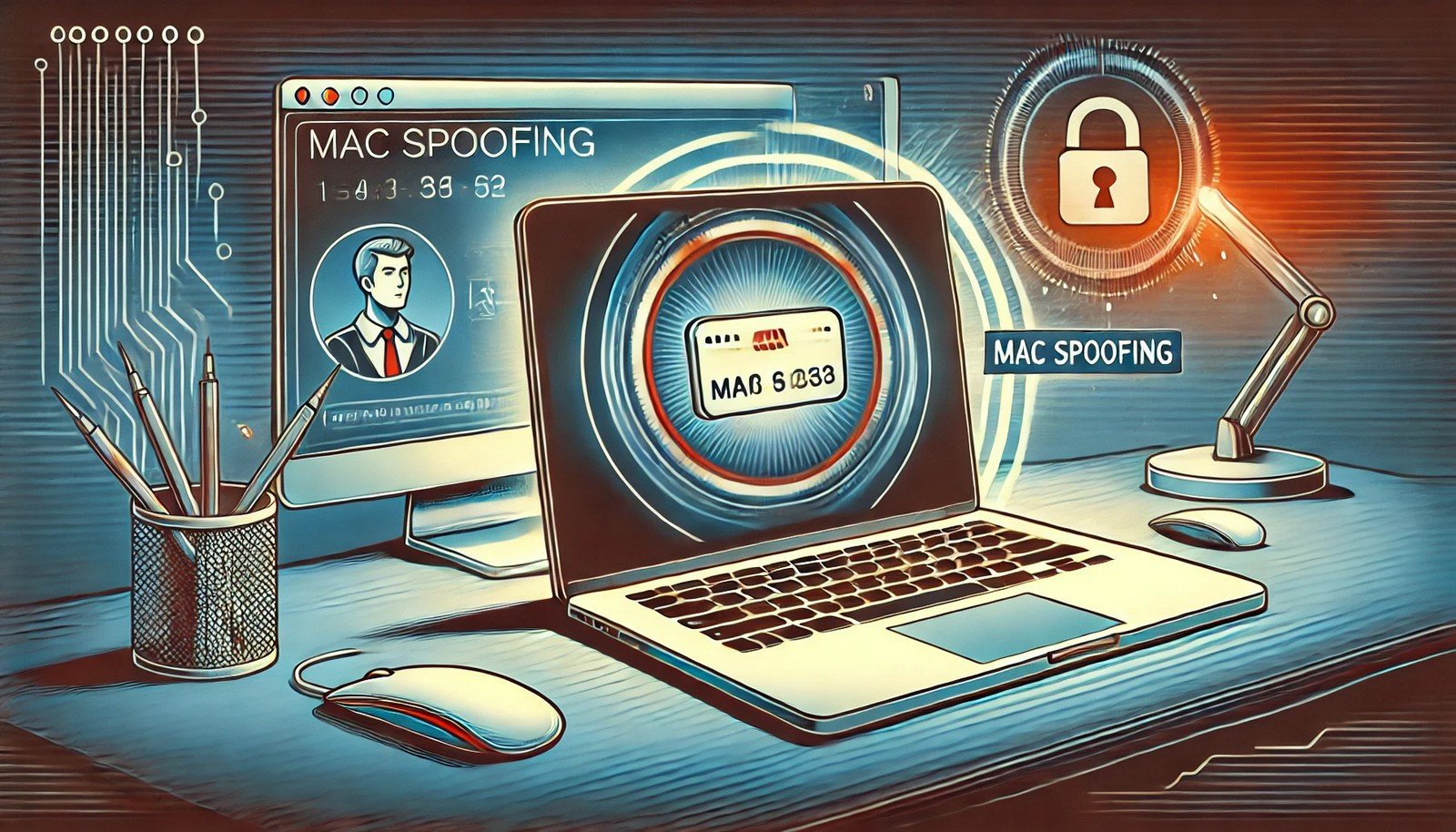MAC Spoofing
 (Representational Image | Source: Dall-E)
(Representational Image | Source: Dall-E)
Quick Navigation:
- MAC Spoofing Definition
- MAC Spoofing Explained Easy
- MAC Spoofing Origin
- MAC Spoofing Etymology
- MAC Spoofing Usage Trends
- MAC Spoofing Usage
- MAC Spoofing Examples in Context
- MAC Spoofing FAQ
- MAC Spoofing Related Words
MAC Spoofing Definition
MAC Spoofing is the process of altering the Media Access Control (MAC) address of a network device. A MAC address is a unique identifier assigned to a device’s network interface card (NIC) by the manufacturer. By changing the MAC address, users can bypass network filters, enhance privacy, or impersonate another device on a network. MAC spoofing is commonly used in cybersecurity testing, evading tracking, and bypassing access restrictions in networks.
MAC Spoofing Explained Easy
Think of your MAC address like your home address, which tells where you live. When you change it, it's like putting a different address on a letter before sending it. This way, the letter (your device) looks like it’s coming from somewhere else. MAC spoofing helps devices pretend they are someone else when connecting to networks.
MAC Spoofing Origin
MAC Spoofing emerged as a technique used by network administrators and security experts to test network security and privacy. It has since been adopted by both ethical hackers and malicious actors to bypass security restrictions, remain anonymous, or access restricted networks.
MAC Spoofing Etymology
The term “MAC Spoofing” comes from MAC (Media Access Control) and Spoofing, which means faking or disguising something to deceive or manipulate.
MAC Spoofing Usage Trends
MAC Spoofing has grown in prominence due to increasing concerns over online privacy and cybersecurity. It is widely used by penetration testers, VPN users, and individuals seeking to avoid MAC-based tracking by service providers. On the other hand, organizations implement MAC filtering to detect and prevent unauthorized spoofing attempts.
MAC Spoofing Usage
- Formal/Technical Tagging:
- Cybersecurity
- Network Security
- Ethical Hacking - Typical Collocations:
- "MAC address spoofing"
- "Bypassing MAC filtering"
- "Network security through MAC spoofing"
- "Changing MAC address for anonymity"
MAC Spoofing Examples in Context
- A cybersecurity researcher uses MAC spoofing to test a network’s vulnerability to unauthorized access.
- A public Wi-Fi user spoofs their MAC address to avoid tracking by network administrators.
- Network administrators detect and block MAC spoofing attempts to prevent unauthorized access to corporate networks.
MAC Spoofing FAQ
- What is MAC Spoofing?
MAC Spoofing is the act of changing a device’s MAC address to disguise its identity on a network. - Why do people use MAC Spoofing?
It is used for privacy protection, bypassing network filters, cybersecurity testing, and sometimes for malicious purposes like unauthorized access. - Is MAC Spoofing illegal?
MAC Spoofing itself is not illegal, but using it for malicious purposes such as bypassing network restrictions or engaging in fraudulent activities is illegal in many jurisdictions. - How can I spoof my MAC address?
You can change your MAC address using built-in operating system tools or third-party software, depending on your device and OS. - Can MAC Spoofing be detected?
Yes, network administrators can detect spoofed MAC addresses using advanced monitoring tools and anomaly detection systems. - Does MAC Spoofing hide my identity online?
It can help mask your device on local networks, but it does not provide full anonymity as IP tracking and other identifiers can still be used to track activity. - Can MAC Spoofing help in bypassing Wi-Fi restrictions?
Yes, some users spoof their MAC address to bypass MAC-based restrictions on public Wi-Fi networks. - Do all devices support MAC Spoofing?
Most devices, including Windows, Linux, and Android, support MAC Spoofing, but iPhones and iPads have stricter restrictions. - Can MAC Spoofing improve security?
In some cases, ethical hackers use MAC Spoofing for penetration testing to identify vulnerabilities in a network. - How do organizations prevent MAC Spoofing attacks?
Companies use authentication protocols, MAC address filtering, and anomaly detection tools to identify and block spoofed addresses.
MAC Spoofing Related Words
- Categories/Topics:
- Cybersecurity
- Network Privacy
- Ethical Hacking
Did you know?
In 2014, Apple introduced a feature in iOS devices that automatically generates random MAC addresses when scanning for Wi-Fi networks. This was designed to prevent tracking by retailers and advertisers who monitor MAC addresses to track customer movements in stores.
PicDictionary.com is an online dictionary in pictures. If you have questions or suggestions, please reach out to us on WhatsApp or Twitter.Authors | Arjun Vishnu | @ArjunAndVishnu

I am Vishnu. I like AI, Linux, Single Board Computers, and Cloud Computing. I create the web & video content, and I also write for popular websites.
My younger brother, Arjun handles image & video editing. Together, we run a YouTube Channel that's focused on reviewing gadgets and explaining technology.



Comments powered by CComment